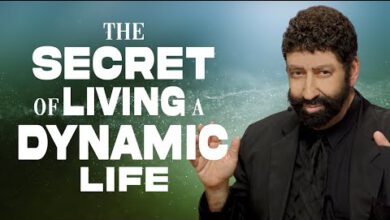The End Time Mystery of The Autumn Holy Days | Feast of Tabernacles | Jonathan Cahn Sermon
“The Final Feasts: The Hidden Prophetic Secrets of the End Times”
From the very beginning, God’s appointed holy days were not random celebrations. They were prophetic appointments—signs pointing to the great plan of redemption, from the first Passover to the last Feast of Tabernacles. And as Jonathan Cahn reveals, the autumn feasts are not only about ancient Israel; they are about the closing of the age, the final chapters of human history.
The Feast of Tabernacles—Sukkot—is the culmination of all the feasts. In Leviticus 23, God commands His people to dwell in tabernacles for seven days, celebrating the harvest and remembering how He sustained them in the wilderness. Every element of that celebration carries a message for us today.
The palm branch represents the valleys of life—those low moments where God never left us. The myrtle, which grows on rocky ground, reminds us of His faithfulness through hardship. And the willow by the streams symbolizes His provision when our souls are dry and weary. Each branch tells a story: in the valleys, in the mountains, and in the wilderness, God was always there.
The people would lift up these branches—the lulav—and wave them in every direction: east, west, north, south, up to the heavens and down to the earth. It was a declaration that the Lord is King over all creation. And in the same way, our lives are meant to declare that Jesus is Lord over every part of who we are—over our joys, our struggles, our valleys, and our victories.
During this feast, the high priest would draw water from the Pool of Siloam and pour it out before the altar, proclaiming Isaiah 12: “With joy you will draw water from the wells of salvation.” It was during this very moment, at the Feast of Tabernacles, that Jesus stood and cried out, “If anyone is thirsty, let him come to Me and drink. Whoever believes in Me, out of his heart will flow rivers of living water.” The pouring of the water pointed to the outpouring of the Holy Spirit—first at Pentecost, and again in the last days.
The autumn feasts mark the closing of God’s sacred year, and prophetically, they speak of the closing of this age. Even today, we see signs in the world aligning with these appointed times—wars, judgments, and moments of divine awakening. The Feast of Trumpets declares the coming of the King. Yom Kippur reveals the day of judgment and mercy. And the Feast of Tabernacles points to the final joy—the time when God Himself will dwell with His people.
These feasts remind us that history began in a garden and will end in a city—the New Jerusalem. Revelation, the final book of Scripture, leads us right back to Jerusalem, the center of God’s eternal plan. Every trumpet blast, every act of repentance, every prayer for rain, all points to one truth: the King is coming.
In these final appointed times, God calls His people to return—to return from sin, from compromise, from distraction—and prepare their hearts. For the same God who guided Israel through the wilderness is guiding His church toward the Promised Land, toward the eternal Feast of Tabernacles, where He will wipe away every tear and dwell among us forever.
The autumn feasts are not just ancient traditions. They are living prophecies—echoes of the end. And as they unfold before our eyes, they remind us that everything God began, He will finish. The sound of the trumpet is near. The King is at the door.
